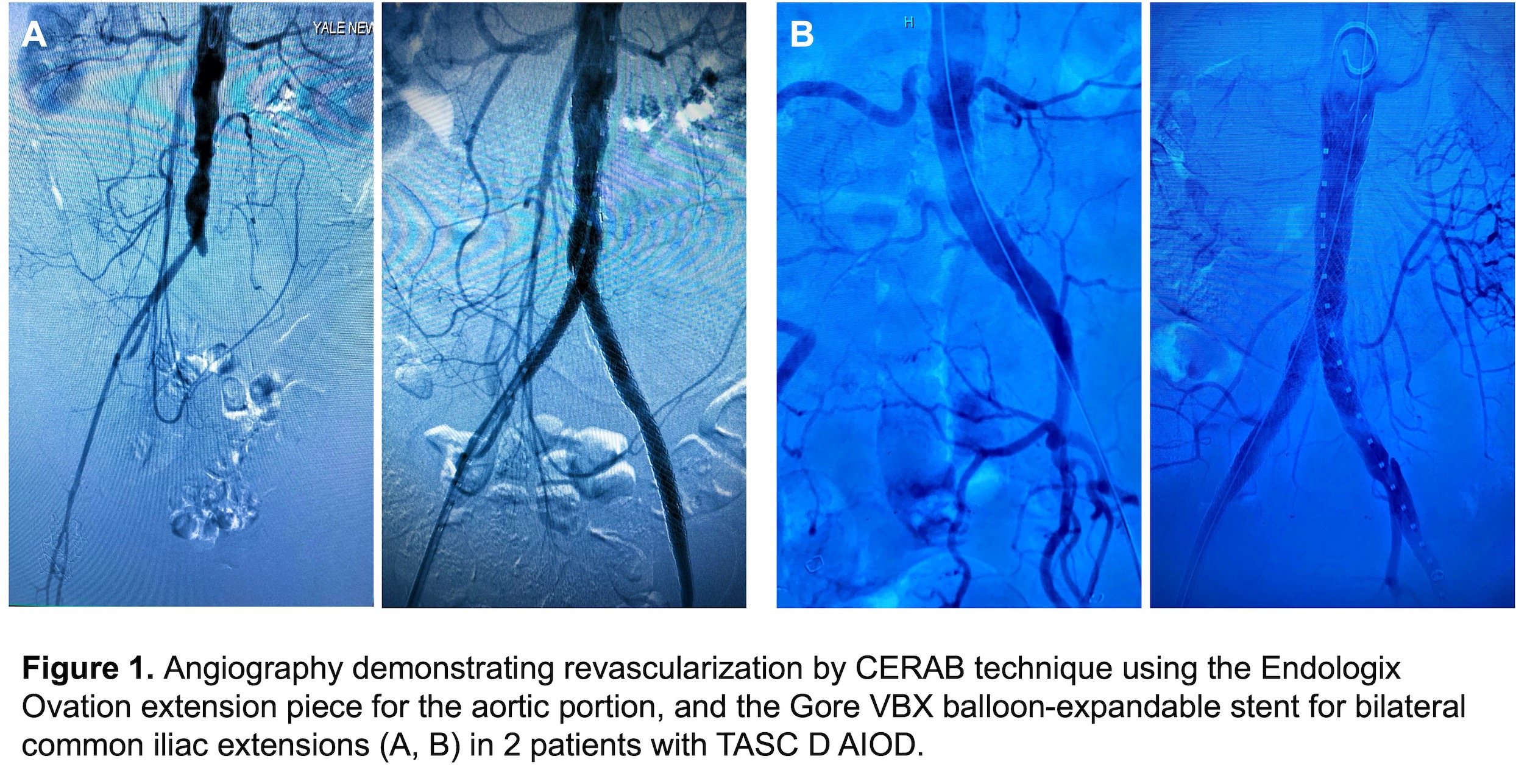Covered Endovascular Reconstruction Of The Aortic Bifurcation Using Evar Components For Treatment Of Tasc D Aortoiliac Occlusive Disease
Anudeep Yekula, MBBS, Uwe Fischer, MD, Naiem Nassiri, MD.
Yale New Haven Hospital, New Haven, CT, USA.
OBJECTIVE: Covered Endovascular Reconstruction of the Aortic Bifurcation (CERAB) is increasingly used for endovascular treatment of aortoiliac occlusive disease (AIOD) due to superior flow dynamics and durable patency. Lack of standardized technique and dedicated stent-graft technology has impeded wide clinical applicability. We present our institutional experience with a standardized CERAB algorithm that incorporates modular EVAR components in treatment of patients with TASC D AIOD.
METHODS: A retrospective analysis was performed of consecutive patients with TASC D AIOD who underwent CERAB at Yale-New Haven Hospital using the Endologix Ovation extension limbs for the aortic portion of the technique with the Gore VBX balloon-expandable covered stents used for bilateral common iliac extensions. Patients were evaluated for technical success - defined as successful delivery of all components with re-establishment of unimpeded flow - and complications perioperatively; and followed up for evaluation of clinical outcomes, non-invasive vascular studies, delayed complications, and durability of repair.
RESULTS: From 2020 - 2021, 7 consecutive patients (4 male; median age 74 years [range 66-89]) were treated. Clinical presentation included claudication (4), rest pain (2), and tissue loss (1). Technical success was 100%. The mean operative time (OT) was 265±113 minutes, mean blood loss was 289±174 cc, and mean contrast volume was 168±88. The median hospital stay was 7 days (range 2-20). All patients showed significant improvement in ABI from a mean of 0.54±0.l before to 0.81±0.26 (p=0.02) after the procedure. In patients with tissue loss, WIfI scores improved after revascularization (W: 1 to 0; I: 2.25 to 0; fI: 1.6 to 0). WIfI risk of major amputation was reduced from 4±1 (high risk) to 0 (low risk). Primary patency rate was 100% at a median follow-up of 8.1 months (1-16.2 months). There was one procedural complication (controlled aortic rupture), 3 post-procedural complications (stroke, groin hematoma, groin infection) and 2 delayed complications (groin infection) and there was no mortality.
CONCLUSIONS: Our experience demonstrates the safety and feasibility of the CERAB technique with EVAR components, with results comparable with traditional CERAB. Utilization of EVAR components for CERAB is a promising first step in dedicated device development for AIOD. 
Back to 2022 ePosters
